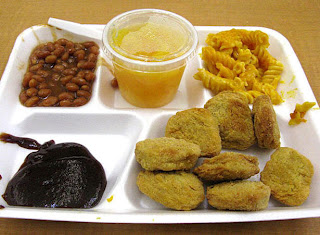 |
Victims of a hostile takeover You are invited to the next meeting of the Culinary Historians of Atlanta The Ice Man Goeth In 1923 an ice refrigerator, known today as an icebox, cost less than $30. Ice was plentiful and cheap. In contrast, the least expensive electric refrigerator was $450, and was made with flammable refrigerants. Electricity was costly and scarce, especially in rural areas. So, why in the world did the ice men and the icebox disappear? What were the public and backroom deals that led to the downfall of ice refrigeration? Who promoted the switch? Was the public duped? Did people really need a new Frigidaire refrigerator (and color matching electric range)? Millie Coleman will tell this tale. Millie doesn't just lecture. She creates a series of characters from a particular era to to create a new genre -- part performance art, part informational. Playing the part of one Mary Engle Pennington, a 1920s chemist and director of the ice industry's Household Refrigeration Bureau, she will explain how refrigeration, sanitation and nutrition science, along with the Irish potato famine, propelled American society's craze for appetizer aspics, gelatin salads, jiggly Jell-O desserts and ice box pies -- all of which which paved the way for the institutionalized foods we eat today. Open to the public. $5 per person Free to CHA members (CHA dues are $15 per year). Date: Sunday, August 22, 2010 Time: 2-4 pm Location: 1937 Lakeside Parkway, Tucker, GA 30084 Please RSVP by sending a comment or through our Facebook page: Facebook address is Culinary Historians of Atlanta Upcoming events: September 26 - The Herbs of Shakespeare - herbs that were used in Elizabethan times October 17 - Relishing History - the history of three condiments - make your own mustard! |
Sunday, August 15, 2010
You're Invited - August 22
Sunday, August 1, 2010
A Brief History of the National School Lunch Program
 |
| School lunch in Tokyo includes rice, soup, fish, pickled cucumbers and milk |
Sometimes, in a case like this, it's instructive to look at the reason such a large and dysfunctional program ever came to be. The reasons are, to say the least, enlightening.
The National School Lunch Program began in 1946 in the interest of national security. It was also a sort of "give-away" program for farmers, mainly as a way to distribute excess commodity foods, such as cheese.
During both World Wars One and Two, an astounding 40% of military inductees of both sexes were rejected for service because of poor health, much of which was related to poor childhood nutrition. Twenty percent alone were rejected for poor dental health. Other medical conditions included rickets, pellagra, and goiter. Also, there were a large number of inductees who lacked basic academic skills. The link between eating and learning was well understood. as it has been for hundreds of years. As an example, an iodine deficiency results in both goiters and mental insufficiency.
Ironically, during the same time period, farmers were unable to sell all the food they produced. One of the tragedies of the Great Depression was that people starved while farmers produced an abundance of food. But people had no money to buy food -- and the farmers needed money to keep producing food. The farmers were forced to destroy tons and tons of good food in the name of economics.
 |
| Dairymen dumping milk during the Great Depression |
So in 1946, the National School Lunch Act was enacted. Section 2 of the Act defines its dual purpose:
"It is hereby declared to be the policy of Congress, as a measure of national security, to safeguard the health and well-being of the Nation's children and to encourage the domestic consumption of nutritious agricultural commodities and other food, by assisting the States, through grants-in aid and other means, in providing an adequate supply of food and other facilities for the establishment, maintenance, operation and expansion of nonprofit school lunch programs.”
The program was successful. As a result, it was expanded to include breakfast and there was even special legislation enacted to improve access to milk. It spurred tons of research on childhood nutrition and the links between nutrition and learning. The USDA has posted a very interesting History of the National School Lunch Program on its website. Check it out for the full history.
Partly as a result of these programs, we understand more about good food for kids. It's a shame that the present state of child nutrition in America is in crisis. These days, the biggest reason that military enlistees are turned down is obesity. Retired military officers are supporting the reform of school lunches, calling obesity a threat to national security.
 |
| School lunch in Washington, D.C. YUMMY! |
 |
| A vegetable |
Naturally, I want to get into the act, too. Over the next few months, this blog will examine the historic context for our national nutritional pickles. Stay tuned and comment often.
Subscribe to:
Posts (Atom)



